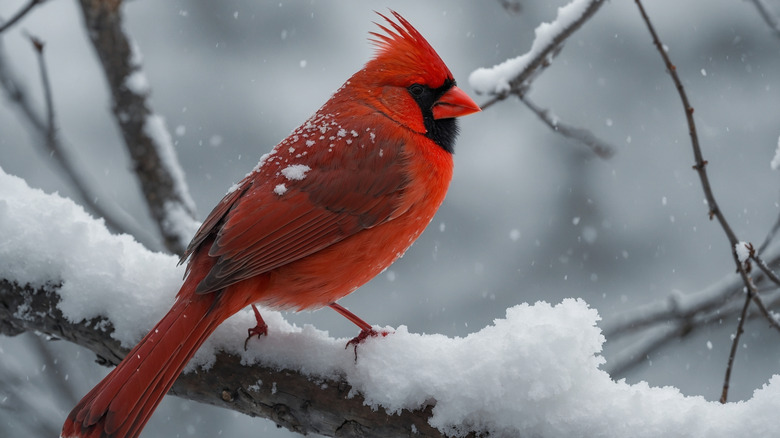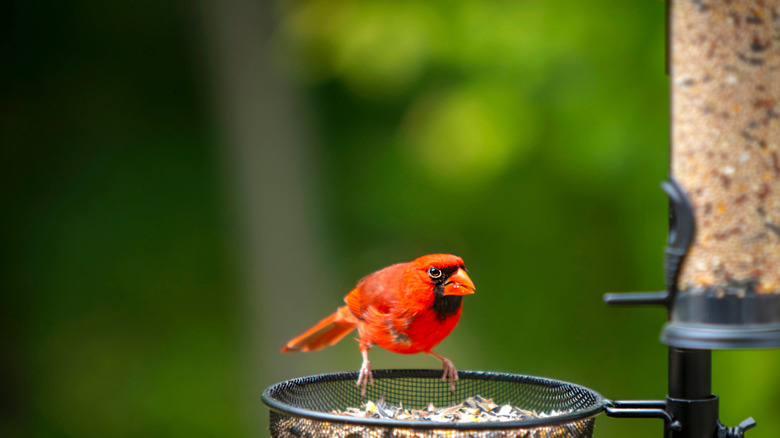Encourage Cardinals To Nest In Your Yard With These Helpful Tips
Hoping to see flashes of red feathers in your backyard? Cardinals are one of several fiery red birds you might be seeing around your garden year-round. That's because they aren't migratory birds, so you should see them all year if you live in an area with cardinals. Knowing what type of shelter, food, and environment cardinals prefer could entice your red feathered friends to move in. Offering dense, varied foliage with nesting materials is a good start. If you're hoping to encourage cardinals to nest in your yard, be sure to provide them with good nesting locations, plenty of nesting materials, and lots of water and food.
Cardinals prefer sheltered yards with shrubs, trees, and foliage of different heights. It gives them cover and protection to feel secure about their surroundings. Using a birdhouse to attract cardinals may be a big mistake, as they prefer nesting in shrubs and trees over birdhouses and nesting boxes. You may need to plant more shelter if your yard is open. Cardinal nests typically sit about 5 to 10 feet off the ground in a patch of dense foliage. Create year-round shelter by adding evergreen plants, such as juniper or spruce trees, to provide attractive protection even in the winter.
Once you have your preferred cardinal nesting locations in place, offer up nesting materials to make the building process easier for your new feathered friends. The red birds typically start building nests around February to prepare for breeding season. Cardinals use twigs to form their nests and assorted materials, including fur, pine needles, and grass, to line and insulate the nest. Keep those materials in your yard or tuck them in a suet feeder for easy access.
Making your yard attractive to cardinals
Providing resources cardinals need, including food, water, and shelter, may encourage nesting. In addition to evergreen trees, growing berry-producing shrubs and trees, such as dogwood, mulberry, blueberry, and hawthorn, offers a natural source of food that allows cardinals to forage for fruit and seeds. You can also add a large, sturdy platform or tray bird feeder filled with favorites like black oil sunflower seeds, cracked corn, crushed peanuts, and safflower seeds. Suet is a nutrient-dense option for winter cardinal feeding. Position the feeder high enough to keep cardinals away from predators. A spot about 10 feet from protective shrubs gives cardinals an easy escape route from predators or a sheltered spot to rest after eating. Feeders too close to foliage may encourage squirrels to snack or offer a hiding spot for predators.
A year-round water source is also attractive to cardinals. Birdbaths around your yard with 2 to 3 inches of water offer a simple option. Moving water is particularly attractive to cardinals, so consider a fountain or dripper in your water source. Heated birdbaths keep water from freezing in colder months.
There could be reasons cardinals want nothing to do with your yard that hurt your chances of having them nest near your home. A lack of shelter, food, and water are key reasons that cardinals pass by your yard. Since cardinals are territorial, reflective surfaces can be a deterrent because the birds sometimes attack their reflections. It could also cause injury to the bird. Screens on your home's windows can reduce reflections. Avoid hanging reflective items near your sheltered area where you want cardinals to nest.

